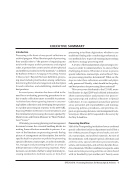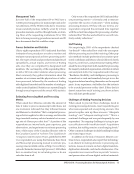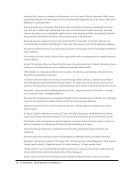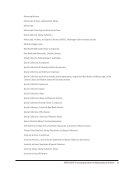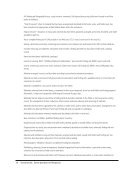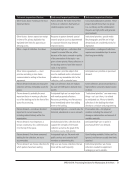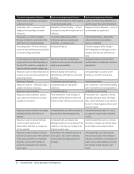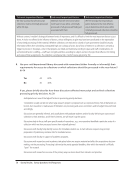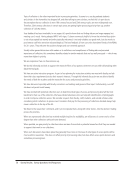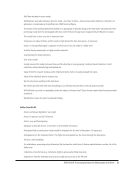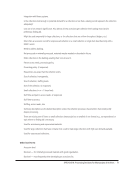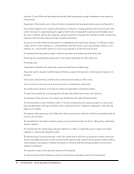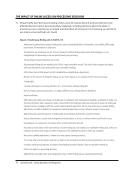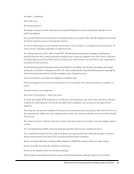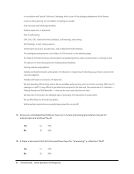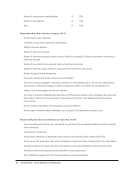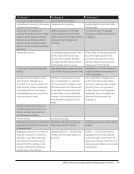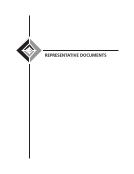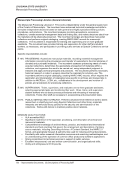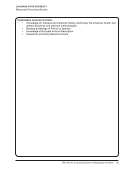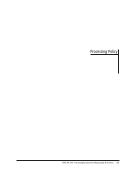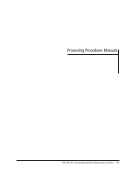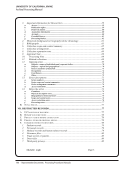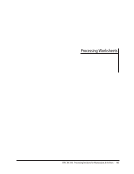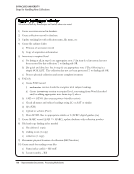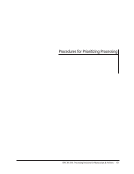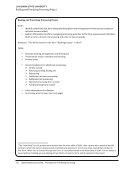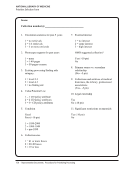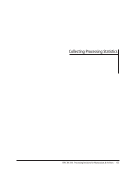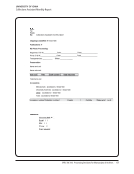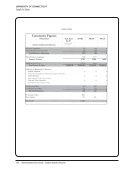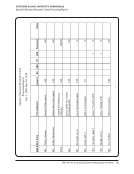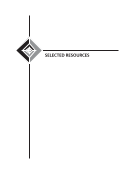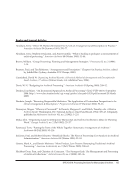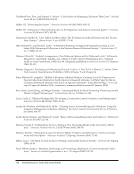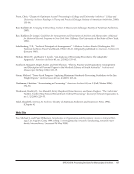SPEC Kit 314: Processing Decisions for Manuscripts &Archives · 75
There needs to be enough information for a researcher to determine whether or not they should take a look at the
materials in the collection. We want to provide enough keyword terms in the descriptions as well as appropriate subject
tracings to help the researcher decide whether or not it is worthwhile to look at the materials. We don’t aim to do the
research for the researcher.
They can use them with relatively minimal descriptions, size of collection and its variety in terms of formats, time
span and subject matter covers all matter in determining whether they will need more description in order to use the
collection effectively. It’s a judgment call based in part on experience of researchers and reference archivists.
This decision is based on the contents of the collection. The more homogeneous the collection is, the more likely we are
to work at series level. We also consider whether there are significant materials that need to be highlighted at an item
level. Finally, we consider the likely users and how we anticipate that they might use the collection.
This is, of course, an art rather than a science. We have to make our best guess based on our own research experience,
our observation of researchers, and our knowledge of our collections. We also have to consider the resources we have
available and whether it is more important to provide some level of access to all of our collections or a more detailed
level of access to only a few collections.
Usually the content of the collection is the main factor in determining the processing level for researcher discoverability.
We have looked at the size of the collection and its content in determining the minimal level of description.
We apply the factors checked above.
We base our choices on the experience and comments of previous researchers.
We base this on professional judgment based on our experiences in working with researchers and collections, and it is
becoming a more and more important consideration in our description decisions.
We describe routinely at three levels: fonds, series, folder. Our primary users are graduate and undergraduate students
whose research must be done in a limited time period we provide detailed finding aids to assist them to pinpoint
material of interest and eliminate material from consideration.
We evaluate each collection based on past experience combined with whatever institutional decisions may affect the
materials and our own professional judgment. However, we are responsive to feedback on user needs from our public
services and curatorial staffs and will reprocess to meet these needs.
We evaluate how many resources it will take to arrange and describe at a certain level at the same time we ask what
is the potential research value to our primary users, or how important is the collection in documenting university history
and culture.
We generally use our collective wisdom and experience balanced against available resources and perceived usefulness.
We then try to refine this by observing how a collection is used and by asking readers what they find useful, what
recommendation they have for better exposing content, soliciting comments on and corrections to finding aids, etc.
We provide a minimal collection-level description based on DACS minimum requirements beyond that, it’s a
combination of instinct and educated guess. I’m not sure there are “rules” that can usefully be applied to answer this
question.
We review the collection and know how our users would likely need to have the collection described.
We try to put ourselves in the researcher’s position.
There needs to be enough information for a researcher to determine whether or not they should take a look at the
materials in the collection. We want to provide enough keyword terms in the descriptions as well as appropriate subject
tracings to help the researcher decide whether or not it is worthwhile to look at the materials. We don’t aim to do the
research for the researcher.
They can use them with relatively minimal descriptions, size of collection and its variety in terms of formats, time
span and subject matter covers all matter in determining whether they will need more description in order to use the
collection effectively. It’s a judgment call based in part on experience of researchers and reference archivists.
This decision is based on the contents of the collection. The more homogeneous the collection is, the more likely we are
to work at series level. We also consider whether there are significant materials that need to be highlighted at an item
level. Finally, we consider the likely users and how we anticipate that they might use the collection.
This is, of course, an art rather than a science. We have to make our best guess based on our own research experience,
our observation of researchers, and our knowledge of our collections. We also have to consider the resources we have
available and whether it is more important to provide some level of access to all of our collections or a more detailed
level of access to only a few collections.
Usually the content of the collection is the main factor in determining the processing level for researcher discoverability.
We have looked at the size of the collection and its content in determining the minimal level of description.
We apply the factors checked above.
We base our choices on the experience and comments of previous researchers.
We base this on professional judgment based on our experiences in working with researchers and collections, and it is
becoming a more and more important consideration in our description decisions.
We describe routinely at three levels: fonds, series, folder. Our primary users are graduate and undergraduate students
whose research must be done in a limited time period we provide detailed finding aids to assist them to pinpoint
material of interest and eliminate material from consideration.
We evaluate each collection based on past experience combined with whatever institutional decisions may affect the
materials and our own professional judgment. However, we are responsive to feedback on user needs from our public
services and curatorial staffs and will reprocess to meet these needs.
We evaluate how many resources it will take to arrange and describe at a certain level at the same time we ask what
is the potential research value to our primary users, or how important is the collection in documenting university history
and culture.
We generally use our collective wisdom and experience balanced against available resources and perceived usefulness.
We then try to refine this by observing how a collection is used and by asking readers what they find useful, what
recommendation they have for better exposing content, soliciting comments on and corrections to finding aids, etc.
We provide a minimal collection-level description based on DACS minimum requirements beyond that, it’s a
combination of instinct and educated guess. I’m not sure there are “rules” that can usefully be applied to answer this
question.
We review the collection and know how our users would likely need to have the collection described.
We try to put ourselves in the researcher’s position.











